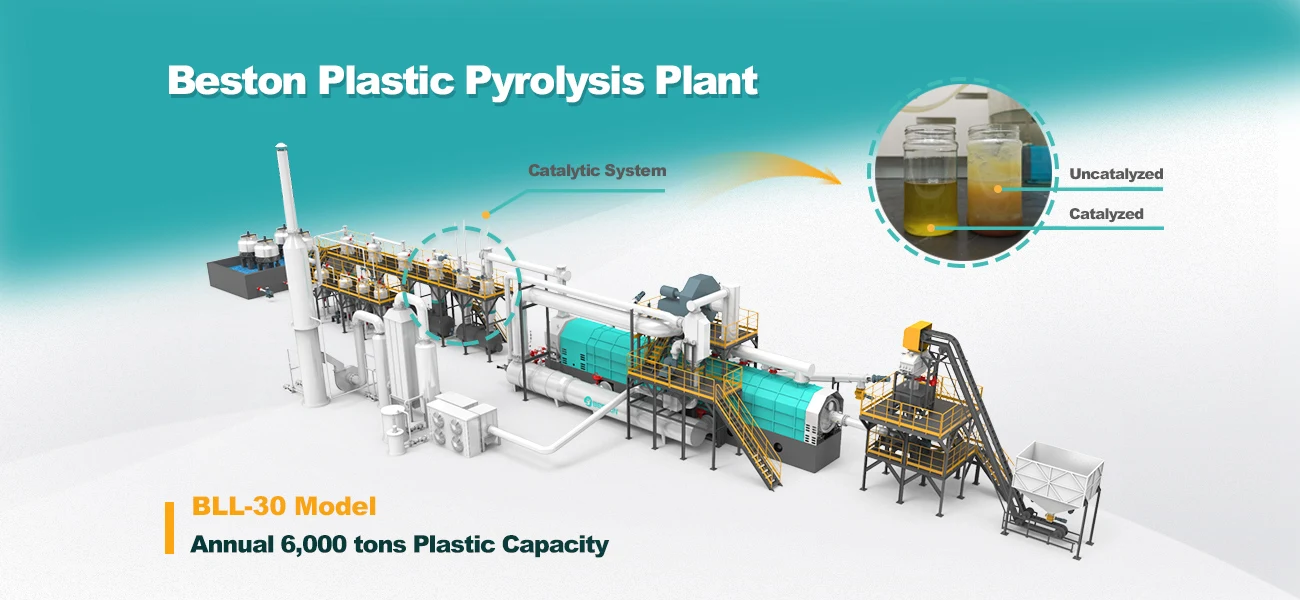How to Choose the Right Equipment for Pyrolysis Oil Production
Choosing the right equipment for pyrolysis oil production starts with understanding your raw materials. Pyrolysis systems can process a variety of feedstocks, such as waste tires, plastics, rubber, and even biomass. Each material has a different yield rate, oil content, and required processing temperature. For example, plastic generally yields more oil than rubber or tires. Therefore, before selecting any machinery, you should first assess the type and volume of feedstock available to ensure compatibility and efficiency.
Capacity and Scale of Production
Another major consideration is the scale of your operation. Pyrolysis plants are available in batch, semi-continuous, and continuous models. For businesses looking to scale production or operate round-the-clock, a continuous pyrolysis plant is ideal. These systems offer automation, stability, and higher throughput compared to batch models. Smaller enterprises or those just entering the market may prefer a batch or semi-continuous unit for more flexibility and lower upfront investment.

Energy Efficiency and Heat Recovery
Energy consumption can significantly impact your operational costs. Advanced pyrolysis equipment now integrates heat recovery systems to reuse energy and reduce fuel consumption. When comparing systems, look for features such as integrated condensers, oil-water separators, and flue gas cleaning units. These not only improve the system’s efficiency but also help comply with environmental standards.
Automation and Control Systems
Modern pyrolysis equipment often comes equipped with programmable logic controllers (PLCs) and smart control interfaces. These systems allow you to monitor and adjust temperature, feeding speed, pressure, and discharge time in real time. A well-automated plant not only reduces the need for constant operator supervision but also improves safety and consistency in product quality.
Quality of End Products
The end products of pyrolysis—namely pyrolysis oil, carbon black, and combustible gas—vary in quality depending on the equipment and feedstock used. Some machines are optimized to produce higher-quality oil with fewer impurities. If your goal is to use the oil as industrial fuel or upgrade it further to diesel, ensure that the system supports proper condensation and oil purification. Equipment from reputable manufacturers like Beston Group often includes advanced refining components that enhance output quality.

Compliance with Environmental Standards
Environmental regulations are becoming increasingly strict around the world, especially concerning emissions and waste disposal. Choosing equipment that meets or exceeds environmental standards is not just a legal necessity—it’s also good business. Look for systems with flue gas purification, closed feeding and discharging systems, and low energy consumption ratings. These features help reduce your environmental footprint and make it easier to obtain permits and licenses.
Space and Installation Requirements
Pyrolysis systems vary widely in size. Before purchasing, you need to evaluate the space available in your facility. Some units require more space for auxiliary equipment like gas scrubbers or oil storage tanks. In addition, installation complexity can impact both time and costs. Make sure to choose a supplier that provides detailed layout plans, technical support, and optional on-site installation services.
After-Sales Support and Maintenance
Pyrolysis systems are sophisticated and require ongoing maintenance for optimal performance. Reliable after-sales service is critical, especially in the first few years of operation. Partnering with a well-established supplier like Beston Group ensures that you have access to spare parts, technical guidance, and emergency support when needed. Always check warranty terms and the availability of service centers in your region before making a purchase.
Cost-Benefit Analysis
While price is always a factor, it shouldn’t be the only one. Lower-cost systems may seem appealing, but they often come with trade-offs in durability, efficiency, or compliance. Conduct a thorough cost-benefit analysis that includes initial investment, operating costs, potential revenue from end products, and payback period. You may find that investing a bit more upfront in a pyrolysis plant for sale with superior technology pays off in long-term savings and profitability.
Customization and Scalability
Every business has unique needs, and off-the-shelf solutions may not always fit perfectly. Look for equipment that can be customized to your specifications—whether that’s adjusting the reactor size, integrating automatic feeders, or adding extra safety features. Furthermore, if you plan to expand operations in the future, opt for a modular design that allows for easy scaling.
Choosing the Right Supplier
Finally, your choice of supplier can make or break your investment. A reputable manufacturer provides not just the equipment, but also guidance throughout the buying, installation, and operational processes. Beston Group is a global leader in this field, known for its reliable technology, extensive R&D, and outstanding customer service. When evaluating suppliers, review their track record, customer testimonials, certifications, and global project cases to ensure you’re making an informed decision.
Conclusion
Selecting the right equipment for pyrolysis oil production involves careful consideration of many factors, including feedstock, scale, automation, environmental compliance, and supplier reliability. By thoroughly assessing your specific needs and working with a trusted provider, you can make an investment that delivers high returns while contributing to sustainable waste management. If you’re exploring your options, consider starting with a pyrolysis plant for sale from a reputable company to ensure quality and long-term success.